Officer
SECOND LIEUTENANT (2LT)

Typically the entry-level rank for most Commissioned Officers. Leads platoon-size elements consisting of the platoon SGT and two or more squads (16 to 44 Soldiers).
FIRST LIEUTENANT (1LT)

A seasoned lieutenant with 18 to 24 months service. Leads more specialized weapons platoons and indirect fire computation centers. As a senior Lieutenant, they are often selected to be the Executive Officer of a company-sized unit (110 to 140 personnel).
CAPTAIN (CPT)

Commands and controls company-sized units (62 to 190 Soldiers), together with a principal NCO assistant. Instructs skills at service schools and combat training centers and is often a Staff Officer at the battalion level.
MAJOR (MAJ)
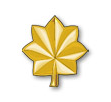
Serves as primary Staff Officer for brigade and task force command regarding personnel, logistical and operational missions.
LIEUTENANT COLONEL (LTC)

Typically commands battalion-sized units (300 to 1,000 Soldiers), with a CSM as principal NCO assistant. May also be selected for brigade and task force Executive Officer.
COLONEL (COL)
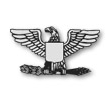
Typically commands brigade-sized units (3,000 to 5,000 Soldiers), with a CSM as principal NCO assistant. Also found as the chief of divisional-level staff agencies.
BRIGADIER GENERAL (BG)

Serves as Deputy Commander to the commanding general for Army divisions. Assists in overseeing the staff’s planning and coordination of a mission.
MAJOR GENERAL (MG)

Typically commands division-sized units (10,000 to 15,000 Soldiers).
LIEUTENANT GENERAL (LTG)

Typically commands corps-sized units (20,000 to 45,000 Soldiers).
GENERAL (GEN)

The senior level of Commissioned Officer typically has over 30 years of experience and service. Commands all operations that fall within their geographical area. The Chief of Staff of the Army is a four-star General.
GENERAL OF THE ARMY (GOA)

This is used in time of War where the Commanding Officer must be equal or of higher rank than those commanding armies from other nations. The last officers to hold this rank served during and immediately following WWII.
Warrant Officer
WARRANT OFFICER 1 (WO1)

An officer appointed by the Secretary of the Army. WO1s are basic level, technically and tactically focused officers who perform the primary duties of technical leader, trainer, operator, manager, maintainer, sustainer, and advisor. WO1s primarily support levels of operations from team or detachment through battalion, requiring interaction with all soldier cohorts and primary staff
CHIEF WARRANT OFFICER 2 (CW2)
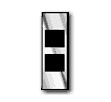
An officer, commissioned by the President of the United States. CW2s are intermediate level technical and tactical experts who perform the primary duties of technical leader, trainer, operator, manager, maintainer, sustainer, and advisor. CW2s primarily support levels of operations from team or detachment through battalion, requiring interaction with all soldier cohorts and primary staff.
CHIEF WARRANT OFFICER 3 (CW3)
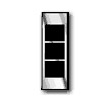
An officer, commissioned by the President of the United States. CW3s are advanced-level technical and tactical experts who perform the primary duties of technical leader, trainer, operator, manager, maintainer, sustainer, integrator, and advisor. CW3s primarily support levels of operations from team or detachment through brigade, requiring interaction with all soldier cohorts and primary staff.
CHIEF WARRANT OFFICER 4 (CW4)
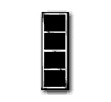
An officer, commissioned by the President of the United States. CW4s are senior-level technical and tactical experts who perform the primary duties of technical leader, manager, maintainer, sustainer, integrator and advisor. They primarily support battalion, brigade, division, corps, and echelons above corps operations.
CHIEF WARRANT OFFICER 5 (CW5)

An officer, commissioned by the President of the United States. CW5s are master-level technical and tactical experts who perform the primary duties of technical leader, manager, integrator, advisor, or any other particular duty prescribed by branch. CW5s primarily support brigade, division, corps, echelons above corps, and major command operations. CW5s have special WO leadership and representation responsibilities within their respective commands.
Enlisted Soldier
PRIVATE (PVT/PV2)
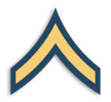
Lowest rank: a trainee who’s starting Basic Combat Training (BCT). Primary role is to carry out orders issued to them to the best of his/her ability. (PVT does not have an insignia)
PRIVATE FIRST CLASS (PFC)
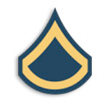
PV2s are promoted to this level after one year, or earlier by request of supervisor. Individual can begin BCT at this level with experience or prior military training. Carries out orders issued to them to the best of his/her ability.
SPECIALIST (SPC)

Can manage other enlisted Soldiers of lower rank. Has served a minimum of two years and attended a specific training class to earn this promotion. People enlisting with a four year college degree can enter BCT as a Specialist.
CORPORAL (CPL)
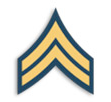
The base of the Non-Commissioned Officer (NCO) ranks, CPLs serve as team leader of the smallest Army units. Like SGTs, they are responsible for individual training, personal appearance and cleanliness of Soldiers.
SERGEANT (SGT)
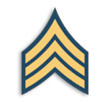
Typically commands a squad (9 to 10 Soldiers). Considered to have the greatest impact on Soldiers because SGTs oversee them in their daily tasks. In short, SGTs set an example and the standard for Privates to look up to, and live up to.
STAFF SERGEANT (SSG)
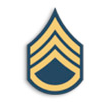
Also commands a squad (9 to 10 Soldiers). Often has one or more SGTs under their leadership. Responsible for developing, maintaining and utilizing the full range of his Soldiers’ potential.
SERGEANT FIRST CLASS (SFC)
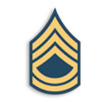
Key assistant and advisor to the platoon leader. Generally has 15 to 18 years of Army experience and puts it to use by making quick, accurate decisions in the best interests of the Soldiers and the country.
MASTER SERGEANT (MSG)
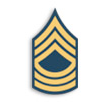
Principal NCO at the battalion level, and often higher. Not charged with all the leadership responsibilities of a 1SG, but expected to dispatch leadership and other duties with the same professionalism.
FIRST SERGEANT (1SG)
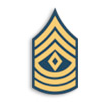
Principal NCO and life-blood of the company: the provider, disciplinarian and wise counselor. Instructs other SGTs, advises the Commander and helps train all enlisted Soldiers. Assists Officers at the company level (62 to 190 Soldiers).
SERGEANT MAJOR (SGM)

SGMs serve as the chief administrative assistant for a headquarters unit of the Army, but the sphere of influence regarding leadership is generally limited to those directly under his charge. They are key enlisted members of staff elements at levels at Battalion or higher.
COMMAND SERGEANT MAJOR (CSM)
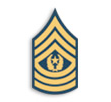
CSMs are the senior enlisted advisors to the commanding officer. They carry out policies and standards, and advise the commander on the performance, training, appearance, and conduct of enlisted soldiers. The CSM’s counsel is expected to be calm, settled and unequivocally accurate, but with an energy and enthusiasm that never wanes, even in the worst of times. A CSM is assignable to any level Battalion or higher.
SERGEANT MAJOR OF THE ARMY

There’s only one Sergeant Major of the Army. This rank is the epitome of what it means to be a Sergeant and oversees all Non-Commissioned Officers. Serves as the senior enlisted advisor and consultant to the Chief of Staff of the Army (a four-star General).